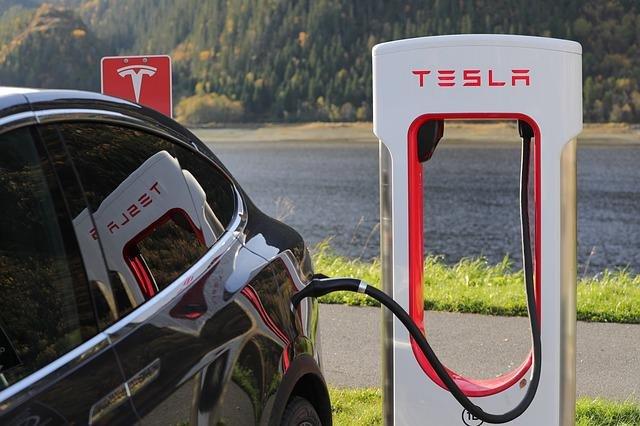Record-high gas prices convinced drivers across the country to take a second look at going electric in 2023. After all, EVs cost more upfront, but they pay you back over time with lower ownership costs and exactly zero trips to the gas station—right?
EVs certainly make financial sense for some drivers, but there are a lot of hidden costs that industry marketing glosses over. “There is a push for every driver to switch to electric, while almost every automaker has invested billions of dollars into expanding their electric vehicle lineups with hopes that you will make the switch,” said automotive expert Lauren Fix of Car Coach Reports.
“Do the math and see what works best for you and your budget, and don’t be pressured into what may or may not work for you. A close inspection of the cost of an EV versus a standard car—the tax breaks, the maintenance, the fuel—might surprise you as to which is actually the better buy.” Here are some of the costs of EVs.
EVs still cost much more to buy.
The EV-ICE price gap gets narrower every year, and Bloomberg predicts that EVs will be cheaper to buy than comparable gas cars by 2025, but for now, electric cars still have much higher MSRPs.
“Most EVs still have higher-than-average starting prices, discouraging plenty of cost-conscious buyers,” Fix said. “There are some lower-cost EVs like the Nissan Leaf, KIA Soul, Hyundai Kona, and Chevy Bolt EV. But keep in mind that the average EV is much more expensive.
“The average price for a brand-new EV is about [$61,488]. That’s considerably higher than the average four-door sedan, which runs about [$48,681], according to Kelley Blue Book. Tax credits and gas savings can save you money. However, it’s going to take a few years to make up a potential $20,000 difference.”
Most drivers will change cars before an EV pays off.
“A few years” might be an understatement. A U.S. Department of Energy report found that, when factoring in the long-term ownership expenses, a small electric SUV costs $0.4508 per mile compared to $0.4727 per mile for a comparable gas car. That’s a difference of just $0.0219 per mile.
The report concludes that it would take 15 years for the average EV to make up for its higher purchase price. How many people do you know who have kept their cars for a decade and a half? “The average length of time drivers own a car is about six years,” Fix said, “with an average yearly total cost of $3,300 for EVs and $3,900 for gas-powered cars.”
Electricity is cheaper than gas, but it’s hardly free.
The most compelling incentive to switch, of course, is fuel. Gas is much cheaper now than it was this summer, but it’s still more expensive than electricity. Still, it’s a mistake to consider switching without factoring in the considerable cost of charging.
“As the price of gasoline rises, so does the cost of electricity,” Fix said. “The average cost of gassing up a car is $1,120 a year. The annual cost to operate an electric vehicle is about $485 per year, although having a home charger can lower that figure. The average cost of a home charger plus installation is $2,000.”
Fixr backs up that figure with a national average range of $1,000 to $2,500; KBB says it’s $2,000 exactly, which goes a long way in stretching out the price parity timeline to 15 years. KBB estimates the average driver spends $56 per month charging an EV at home, but that doesn’t factor in stops at much more expensive fast chargers on the road.
The Myth of a Maintenance-Free Vehicle
When you switch to electric, you leave behind the incredibly complex internal combustion engine and the many problem-prone parts that make it run—no tune-ups, no oil changes, no coolant flushes. But that truth has fostered a popular myth that says electric cars don’t require any professional upkeep.
“You’ll hear some people say there is no maintenance needed for an EV, but that is not true,” Fix said. “If there are moving parts, there is maintenance. Yes, there are fewer moving parts in EVs, so the annual cost of maintaining an electric vehicle comes in at around $900 a year.
That’s only $300 less than the $1,200 a year it costs to keep gas or diesel engines running smoothly.” According to Forbes, EV drivers pay about $0.06 per mile in maintenance costs, compared to $0.10 for ICE vehicles.
EVs are more expensive to repair and insure.
While EVs are cheaper to maintain, they are much more expensive to fix in the case of an accident—more than 50% more, according to Forbes. “Gas-powered vehicles cost less to repair in a collision,” Fix said. Because they cost more to repair, they cost more to insure.
“Insurance is a big factor to consider,” Fix said. “The average cost of an electric car is 23% or more expensive because the car itself and its parts cost more to repair and replace.”
When all is said and done, the bottom line is a $13,000 price difference unless you keep your EV for nearly three times the typical ownership period. “Totaling all factors in, an EV will set you back $71,770,” Fix said. “A gas-powered car? $58,664.
You will never make up the initial expense difference over the lifetime of your more expensive electric vehicle. Put another way, a gas-powered car will cost you $600 more a year to drive. But over an average of six years of owning an EV versus a gas car, the EV will set you back $13,000 more.”
Source: www.gobankingrates.com
